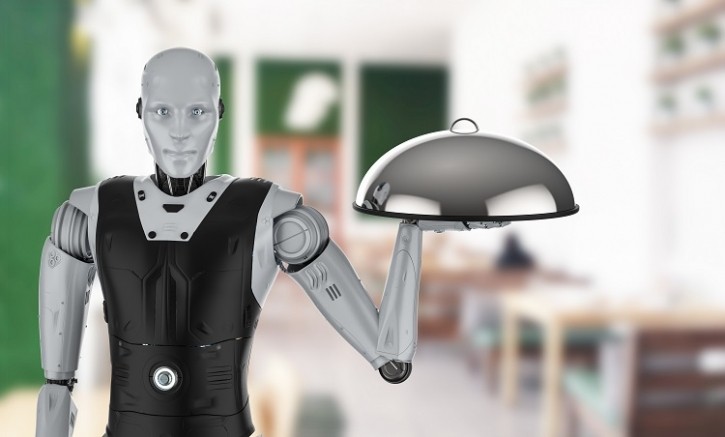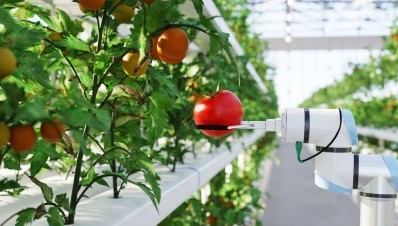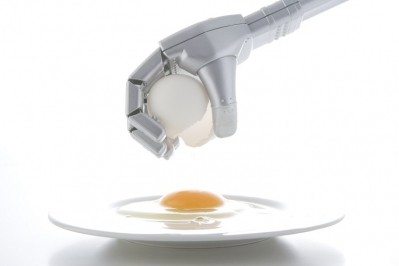Gastronomy in the world of food tech: How to unite disciplines in food innovation

Food is older than humanity itself. Even before we evolved into homo sapiens, living creatures have needed sustenance to survive.
Yet, according to Juan-Carlos Arboleya and Asier Alea of the Basque Culinary Centre in San Sebastián, Spain, we haven’t seen much innovation in food in a long time. That is, until recently, where a range of developments, from cultivated meat to AI, are leading a new chapter in the history of food.
Food innovation in the modern world is an interdisciplinary field, bringing together researchers from the areas such as biology, chemistry, nutrition and the culinary sciences. How can these disparate voices find a common language through which to discuss food innovation? And what is the place of gastronomy in food technology worldwide?
How is innovation changing gastronomy?
Food, until recently, was not an area of innovation, according to Asier Alea, director of global development at the Basque Culinary Centre. But the range of new technologies in food and in gastronomy is changing this, attracting talent and innovators to the world of food.
What is gastronomy?
Gastronomy, sometimes described as the art of food, is the style and method of cooking, according to the United Nations (UN). But for Juan-Carlos Arboleya, it is ‘about more than cooking.’
“It starts from the very beginning, from the production, and it goes through the different sectors.” In other words, it is the art of creating food.
“Gastronomy and food engineering was supposed to be a primal sector. A lot of talent did not come to gastronomy or food because it was supposed to be something that belonged to the past. This changed with the new technologies, with the brave new world of food that is emerging. [It] has made gastronomy interesting for young talent globally,” he said at Tastewise’s Generative AI Food Pioneers summit last week. “Once you get talent into a sector, a lot of interesting things are going to happen.”
How does taste play into food technology?
There are three key goals to aim for when producing food, said Alea. Firstly, does the food help us survive? What are its nutritional qualities? Secondly, does it taste good? What are its sensorial aspects? Thirdly, how sustainable is it?
The sensorial aspects of food, ‘the joy of eating,’ did not go away once we began developing enough food to survive. And it is still has a central place in food technology.
However, chefs and people with knowledge of taste must be incorporated into the production process from the start. Innovation must not be done one discipline at a time. If innovation is done too linearly in the development of a new food, Alea suggested, once the chemist has produced it and the nutritionist has made sure it's safe to eat, “by the time you get to the sensorial aspects of food, it might be too late.”
Taste is still important even in areas such as food for astronauts, where nutrition even more crucial than normal, in the view of Juan-Carlos Arboleya, associate professor and researcher at the Basque Culinary Centre.
Some PhD students, in collaboration with NASA, are focusing on this type of food, which was initially centred around nutrition.
“What they are now thinking is they are preparing people to be in [space for a] longer time, maybe on the Moon or three years just to go to Mars. What they are realising is [food is] not only important from a nutritional point of view. It is also [important from a] a culinary point of view,” Arboleya said at Tastewise’s summit.
How do innovators of different disciplines work together?
Working in food innovation often involves working in a multidisciplinary team, said Arboleya. This means that they will often look at the same problems from a different perspective.
“They are talking about the same, but they think they are talking about different things,” he said.
In order to promote interactions between these different disciplines, a common language is important to develop.
Using AI in plant-based
As well as understanding the market, AI has the potential to understand, and develop, food itself. Non-profit GreenProteinAI, for example, works with plant-based manufacturers to help develop plant-based products using extrusion technology. These manufacturers must provide GreenProteinAI data from their extrusion trials; the platform then aims to help manufacturers optimise the extrusion process.
When innovation is done linearly, researchers may be working at cross-purposes. What they have to think about, said Alea, is “how do you have them all working together, speaking the same language.”
At the Basque Culinary Centre, he suggested, a methodology has been developed that allows communication between different disciplines.
AI, by bringing in empirical data, grounds these different perspectives within shared fact. “We have empirical data, so it doesn’t become a battle of different fronts, of nutritionist versus chemistry, versus organic chemistry, versus chefs” said Alea.
Tastewise’s AI tool, for example, which analyses food trends by scanning menus and social media, can provide something of a lodestar for researchers in culinary terms, and has the potential to prevent them from losing touch with the end goal of developing food that not only innovates, but tastes nice.


























